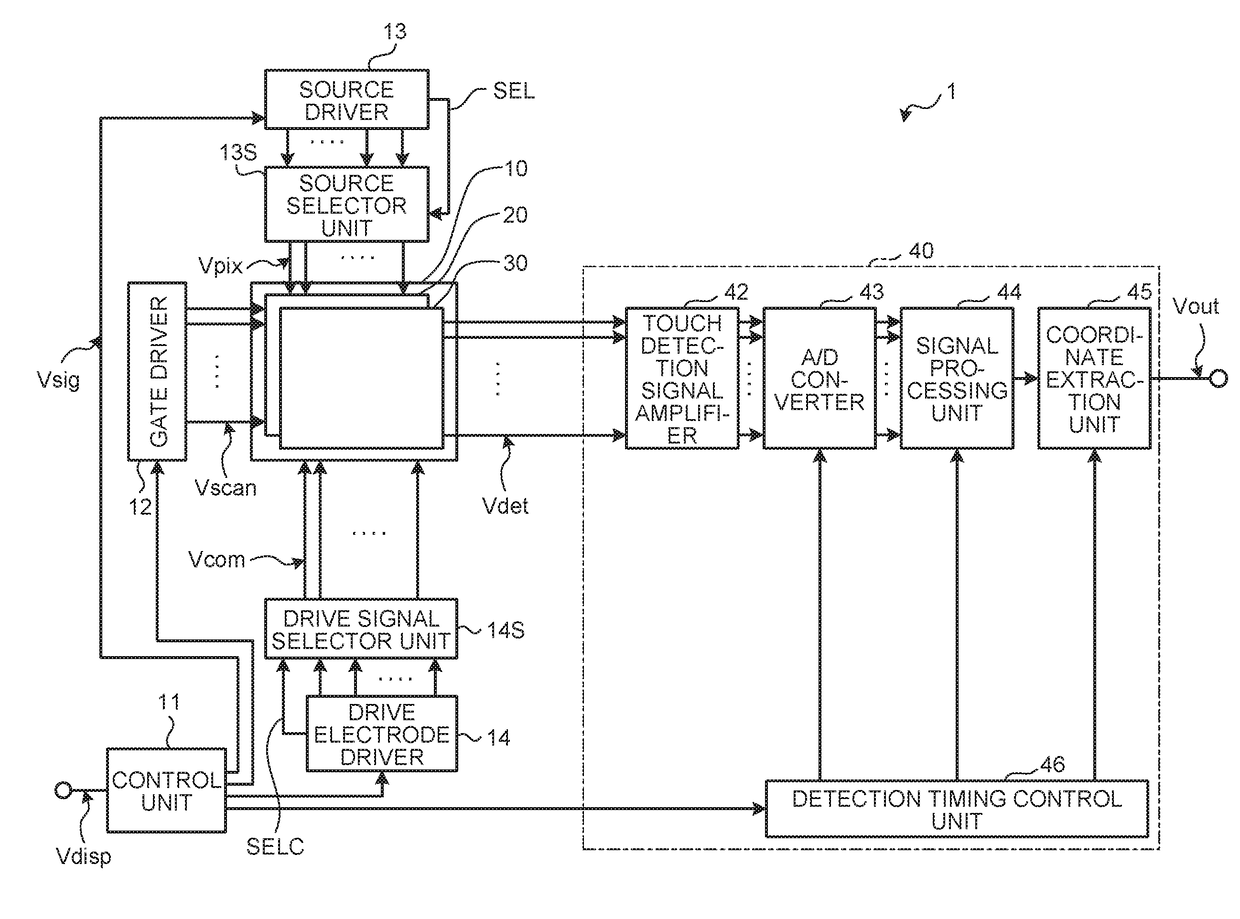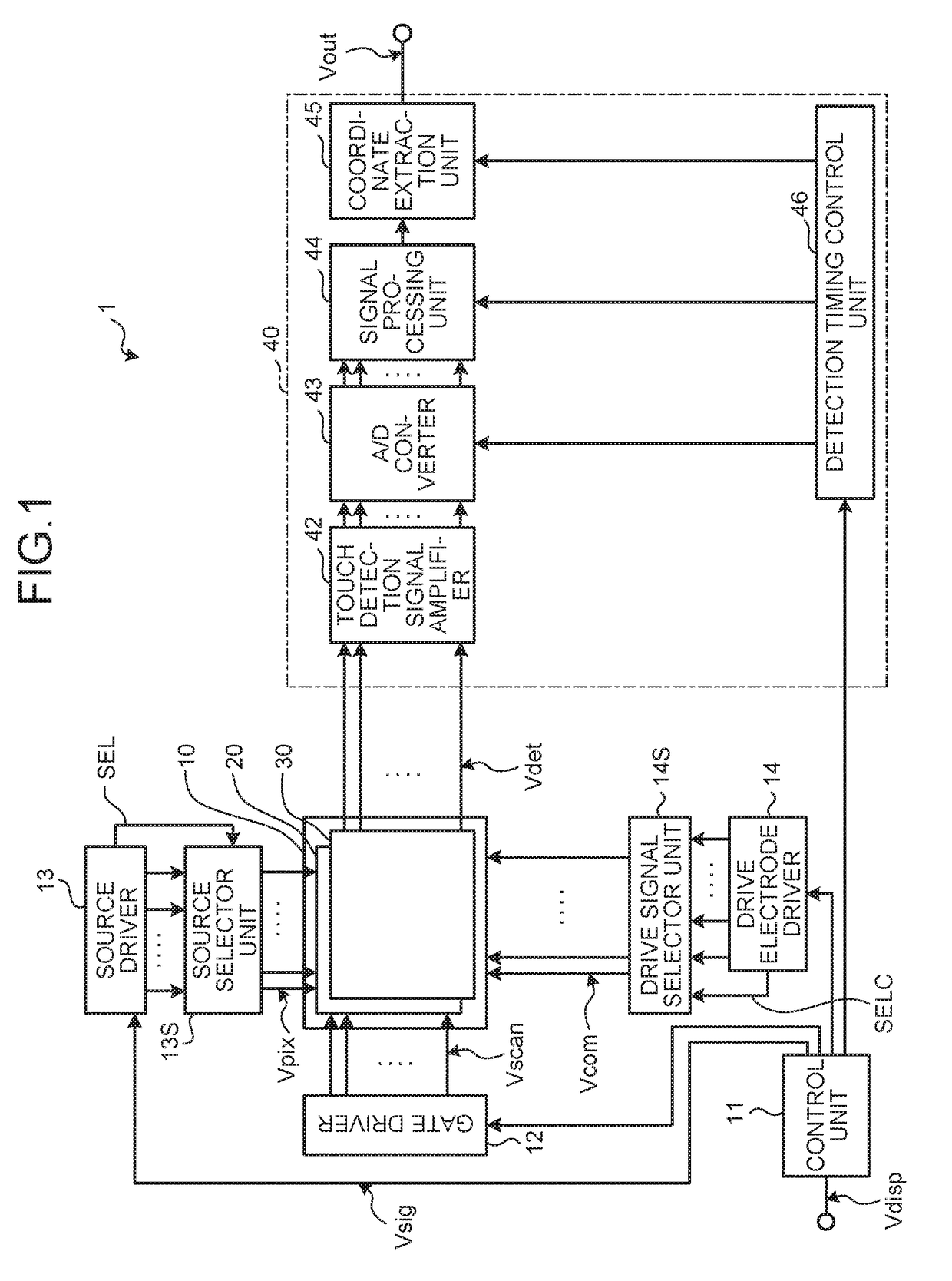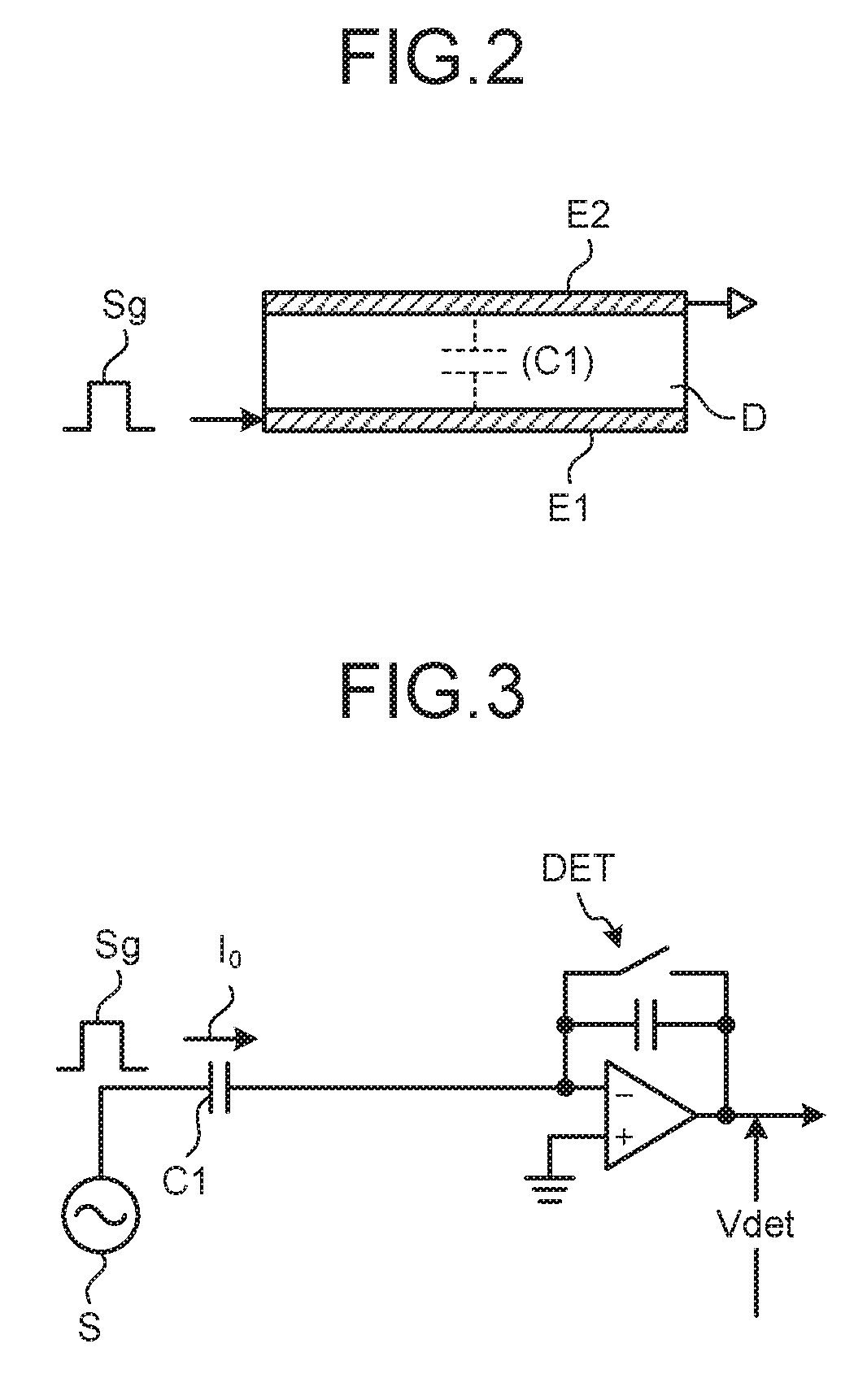Display device with touch detection function and electronic apparatus
a technology of touch detection and electronic equipment, which is applied in the direction of electric digital data processing, instruments, computing, etc., can solve the problems of longer time for charging and discharging the drive electrode, and achieve the effects of reducing the size of the driver ics, suppressing parasitic capacitance, and suppressing the power consumption of touch detection
- Summary
- Abstract
- Description
- Claims
- Application Information
AI Technical Summary
Benefits of technology
Problems solved by technology
Method used
Image
Examples
first embodiment
1-1. First Embodiment
1-1A. Configuration Examples
Overall Configuration Example
[0056]FIG. 1 is a block diagram illustrating a configuration example of a display device with a touch detection function according to a first embodiment of the present disclosure. This display device with a touch detection function 1 includes a display unit with a touch detection function 10, a control unit 11, a gate driver 12, a source driver 13, a source selector unit 13S, a drive electrode driver 14, a drive signal selector unit 14S, and a touch detection unit 40. The display device with a touch detection function 1 is a display device in which the display unit with a touch detection function 10 has a built-in touch detection function. The display unit with a touch detection function 10 is what is called an in-cell type device obtained by integrating a liquid-crystal display unit 20 using liquid-crystal display elements as display elements with an electrostatic capacitance type touch detection device 3...
second embodiment
1-2A. Modification of Second Embodiment
[0119]FIG. 19 is a schematic diagram of a cross section, explaining a relation among the drive electrodes, the pixel signal lines, and the pixel electrodes in a module implemented with a display device with a touch detection function according to a modification of the second embodiment. FIG. 20 is a schematic diagram explaining a relation among the drive electrodes, the pixel signal lines, and the pixels in the module implemented with the display device with a touch detection function according to the modification of the second embodiment. The same constituent elements as those described in the first embodiment above will be given the same numerals, and duplicate description thereof will be omitted.
[0120]As illustrated in FIG. 19, the drive electrodes COML face the pixel electrodes 22 in the direction orthogonal to the surface of the TFT substrate 21. As illustrated in FIGS. 19 and 20, each one of the drive electrodes COML is arranged so as to ...
third embodiment
1-3. Third Embodiment
[0125]A display device with a touch detection function 1A according to a third embodiment of the present disclosure will be described. FIG. 21 is a diagram illustrating an example of a module implemented with the display device with a touch detection function according to the third embodiment. FIG. 22 is a schematic diagram explaining a relation between the drive electrodes and the pixel signal lines in the module implemented with the display device with a touch detection function according to the third embodiment. The same constituent elements as those described in the first embodiment or the second embodiment above will be given the same numerals, and duplicate description thereof will be omitted.
[0126]FIG. 21 schematically illustrates, in the direction orthogonal to the surface of the TFT substrate 21 described above, the display unit with a touch detection function 10 having the drive electrodes COML, and the scan signal lines GCL that are formed so as to th...
PUM
 Login to View More
Login to View More Abstract
Description
Claims
Application Information
 Login to View More
Login to View More - R&D
- Intellectual Property
- Life Sciences
- Materials
- Tech Scout
- Unparalleled Data Quality
- Higher Quality Content
- 60% Fewer Hallucinations
Browse by: Latest US Patents, China's latest patents, Technical Efficacy Thesaurus, Application Domain, Technology Topic, Popular Technical Reports.
© 2025 PatSnap. All rights reserved.Legal|Privacy policy|Modern Slavery Act Transparency Statement|Sitemap|About US| Contact US: help@patsnap.com



